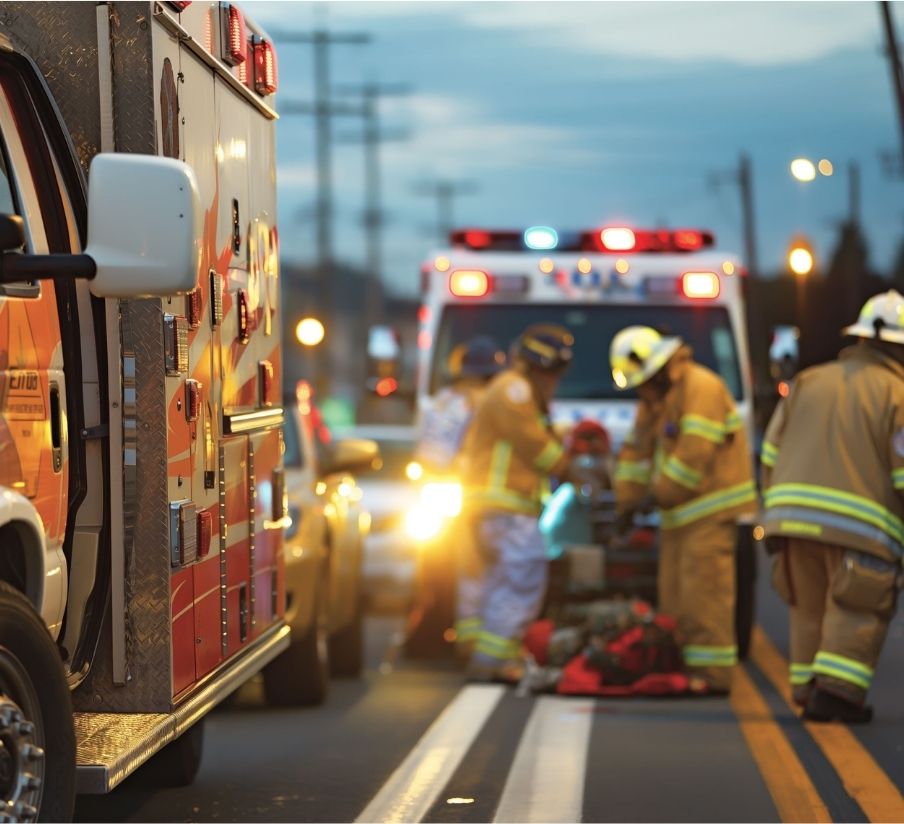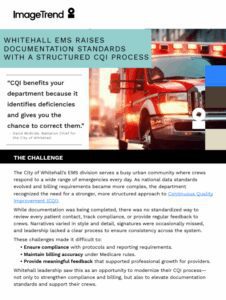The Challenge
The City of Whitehall’s EMS division serves a busy urban community where crews respond to a wide range of emergencies every day. As national data standards evolved and billing requirements became more complex, the department recognized the need for a stronger, more structured approach to Continuous Quality Improvement (CQI).
While documentation was being completed, there was no standardized way to review every patient contact, track compliance, or provide regular feedback to crews. Narratives varied in style and detail, signatures were occasionally missed, and leadership lacked a clear process to ensure consistency across the system.
These challenges made it difficult to:
- Ensure compliance with protocols and reporting requirements.
- Maintain billing accuracy under Medicare rules.
- Provide meaningful feedback that supported professional growth for providers.
Whitehall leadership saw this as an opportunity to modernize their CQI process—not only to strengthen compliance and billing, but also to elevate documentation standards and support their crews.
The Solution
To strengthen compliance and create a consistent feedback loop, Whitehall EMS partnered with ImageTrend to design a structured CQI process built directly into their ePCR. This initiative focused on streamlining workflows, standardizing documentation, and promoting consistency through daily reviews.
“Our goal wasn’t to get anyone in trouble, it was to get people up to a standard and make them better,” said David McBride, Battalion Chief for the City of Whitehall.
Key components of the new process include:
- Revamped ePCR workflows aligned with NEMSIS 3.5 standards, ensuring smoother data flow to the state and NEMSIS while improving internal consistency.
- First-line CQI reviews for every patient contact, including non-transports, to verify critical elements like demographics, vitals, interventions, signatures, and narrative quality.
- Validation Rules and Situational Tools that guide providers step-by-step through protocols for common scenarios, such as respiratory distress or chest pain.
- Daily CQI reports and oversight, giving leadership visibility into incomplete runs, controlled substance use, and high-acuity refusals—ensuring compliance with both clinical protocols and billing requirements.
- Training and cultural reinforcement, with lieutenants trained to ensure consistency and buy-in across the department.
This combination of process improvements and supportive culture marked a major step forward in Whitehall’s approach to CQI, creating a reliable system that benefits providers, leadership, and patients alike.
The Outcome
Since adopting its structured CQI process, Whitehall EMS has seen measurable improvements in both compliance and documentation quality. Signatures, once a frequent source of billing delays, are now consistently captured, allowing the city to increase Medicare reimbursement and reduce administrative backlogs.
Reports are also more accurate, giving leadership greater confidence that patient care is being documented correctly and consistently. Situational Tools within the ePCR have helped providers follow protocol-driven workflows, while daily CQI reviews ensure that every patient contact is evaluated and addressed in real time.
Key outcomes include:
Billing Compliance Strengthened
Missing signatures have been reduced to nearly zero, increasing the number of billable runs.
Improved Documentation Quality
Narratives are clearer, more detailed, and reduce liability for both the city and its providers.
Standardization of Protocols
Situational Tools ensure consistent documentation of procedures and medications.
Proactive Issue Detection
Daily reporting allows leadership to identify and resolve documentation gaps before they escalate.
“We want reports to be a complete, accurate reflection of what happened on the run,” explained McBride. “Signatures used to be a big problem for us, but with the CQI process that’s essentially down to zero.”
What’s Next?
With a strong foundation in place, Whitehall EMS is planning to expand its CQI program into algorithm-specific reviews. Instead of one checklist applied across all calls, reviewers will be able to use tailored CQI questions for scenarios such as chest pain, stroke, or respiratory distress.
The next phase will allow the department to:
- Evaluate clinical performance with greater precision.
- Provide more targeted feedback to providers.
- Build an even stronger connection between protocols, documentation, and quality improvement.
“CQI benefits your department because it identifies deficiencies and gives you the chance to correct them. That’s how you protect your people and your community,” said McBride. “You have to go into CQI with the mindset that it’s not disciplinary—it’s about making people better at their job.”

Tomorrow Won’t Look Like Today. Prepare for What’s Next.
See the bigger picture and confidently face the challenges ahead with our industry-leading solutions.





